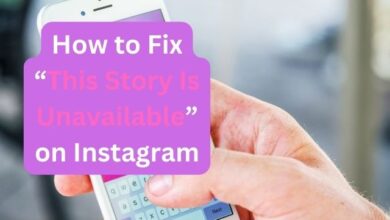The Dark Side of Instagram: 6 Features That May Negatively Affect Teenagers Mental Health

Platforms such as Instagram have become fundamental aspects of teenagers’ lives, providing avenues for connectivity, self-expression, and entertainment. However, alongside the benefits, concerns have arisen regarding the potential negative impact of certain features on teenagers’ mental health.
Instagram, with its emphasis on image, popularity, and constant connectivity, has been scrutinized for fostering feelings of inadequacy, anxiety, and low self-esteem among users.
In 2022, Instagram boasted more than two billion monthly active users, as reported by Zippia. On average, users dedicate approximately 53 minutes of their day to the platform. The number of monthly active IG users reached approximately 2.5 in 2023.
With such staggering user statistics, it’s evident that Instagram holds immense influence, particularly among teenagers. However, while it offers connectivity and self-expression, its features also harbor potential risks to mental health. As we delve deeper into the darker facets of Instagram, it’s crucial to understand how certain features may impact the well-being of young users.
Recommendation Algorithms
The recommendation algorithms are designed to show users content they will likely engage with based on their past interactions and preferences.
While this can enhance the user experience by providing relevant content, it can also create a harmful cycle of comparison and self-doubt among teenagers. The algorithms often prioritize visually appealing content, leading to a proliferation of idealized and curated images that may not reflect reality.
It can exacerbate feelings of inadequacy and diminish self-esteem as teenagers compare their lives to the seemingly flawless ones depicted on Instagram. Additionally, the constant exposure to curated content can create a distorted view of reality, further exacerbating mental health issues among young users.
Likes and Validation
While seemingly innocuous, the feature of receiving likes and validation on Instagram posts can significantly impact teenagers’ mental health. As per TorHoerman Law, the platform’s emphasis on likes as a measure of popularity is leading to a constant need for validation among youngsters. This can create a competitive environment where users feel pressured to post content for maximum likes rather than authentic and meaningful content.
It can contribute to feelings of anxiety, depression, and low self-worth, especially when users compare their likes to those of their peers.
In some cases, the pursuit of likes goes so far that teenagers equate their value with the number of likes they receive. It might also lead to a distorted sense of self-worth and disturbances in mental health. If a teenager in your family or acquaintance has undergone such a situation, they can claim compensation by filing a lawsuit. The Instagram lawsuit can help them seek compensation and address the adverse effects on their mental well-being.
Notifications and Constant Connectivity
The platform’s notifications are designed to keep users engaged by alerting them to new likes, comments, and messages. Notifications usually enhance the user experience by facilitating communication and interaction. However, it can also lead to constant distraction and FOMO (fear of missing out) among teenagers.
According to Statista, the highest number of audiences are aged between 25 and 34 years and account for 28.4% of total IG users.
26.6% of Instagram users are aged between 18 and 24. This is the second-highest usage group and the most sensitive one. The constant need to check and respond can exacerbate feelings of anxiety and stress among teenagers, who may feel pressured to be constantly available online. This behavior can disrupt sleep patterns, impair concentration, and diminish overall well-being.
Instagram Stories and Comparison Culture
According to Social Shepherd, Instagram Stories boasts 500 million daily active users, which has consistently grown since its inception with no indication of decline. This compelling statistic underscores the fact that people are leveraging the platform to share content and foster connections with their followers.
It is a feature that allows users to share photos and videos that disappear after 24 hours. They can contribute to a culture of comparison among teenagers. The temporary nature of stories creates a sense of urgency and FOMO among users, leading them to constantly check for updates from their peers.
It can foster a competitive environment where users feel pressured to create content that will garner attention and validation. The selective and often polished nature of stories leads to comparisons between users’ lives and the seemingly perfect lives portrayed by others.
It fosters a sense of inadequacy and diminishes self-esteem as individuals measure themselves against the carefully curated portrayals of their peers’ lives.
Photo Filters and Image Editing
Rapid technological advancements drive the increasing demand for photo editor apps. It has become easier to capture and enhance stunning photos that stand out.
According to Future Market Insights, the photo filters and app market was estimated to be $318.2 million in 2023. It is expected to reach $572.3 million by 2033, with a CAGR of 4.2%.
While photo editing provides excellent opportunities to seekers with technical understanding, it is becoming a curse for some teenagers on Instagram.
Using filters and editing tools can create a distorted perception of beauty as users strive to emulate the flawless images they see. It can contribute to body dissatisfaction and low self-esteem, especially among teenagers who are already vulnerable to societal pressures.
Additionally, the constant exposure to edited images can blur the line between reality and fantasy. It leads to a skewed sense of self-image and contributes to mental health issues such as anxiety and depression.
Explore Page and Exposure to Idealized Lifestyles
The Explore page displays content tailored to users’ interests and can expose teenagers to idealized lifestyles that may negatively impact their mental health. The algorithm-driven nature of the explore page means that users are often shown content that aligns with popular trends and aesthetics.
While this can introduce users to new and interesting content, it can also create a skewed perception of reality. The constant exposure to images and videos depicting seemingly perfect lifestyles can lead to feelings of meagerness among teenagers.
They start comparing their own lives to the curated content they see, and this is where the problem starts. A sense of dissatisfaction starts with their own lives and a desire to emulate the unrealistic standards portrayed on the platform.
Recommendations for Healthy Instagram Use
To mitigate the negative effects of Instagram on teenagers’ mental health, several recommendations for healthy Instagram use can be considered.
Firstly, users should be encouraged to limit the time they spend on the platform and take regular breaks to avoid becoming overly immersed in Instagram.
Secondly, users should be mindful of who they follow and consider unfollowing accounts that promote unrealistic beauty standards or unhealthy lifestyles. Additionally, users can benefit from engaging with content that promotes body positivity and self-acceptance.
Lastly, users should be encouraged to cultivate a healthy relationship with social media by prioritizing real-life interactions and activities over virtual ones.
In conclusion, while Instagram offers numerous benefits, it also presents several features that can negatively impact teenagers’ mental health. From promoting comparison to constant validation, the platform can contribute to feelings of inadequacy, anxiety, and low self-esteem.
Hence, users need to be mindful of the time spent on the platform and the content they engage with and to prioritize real-life interactions. By adopting these recommendations, teenagers can navigate the dark side of Instagram and protect their mental well-being in the digital age.




